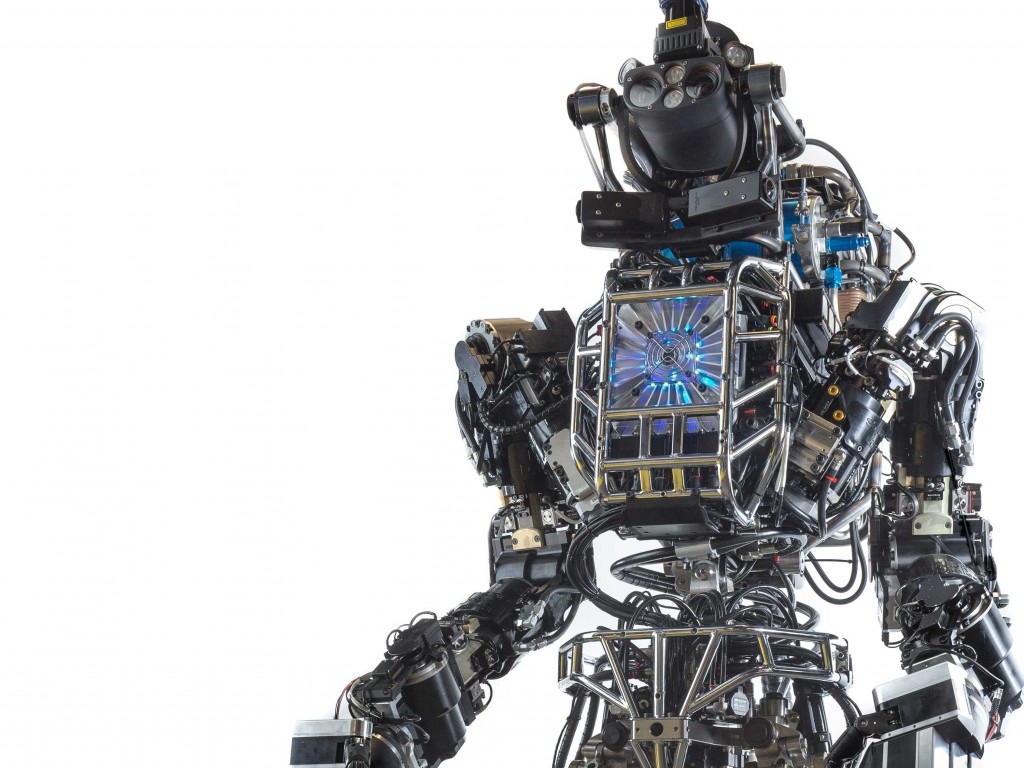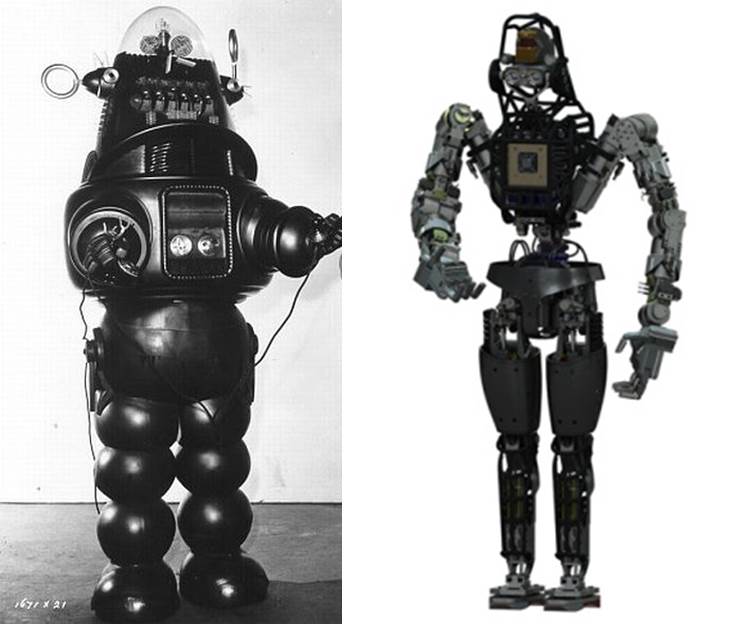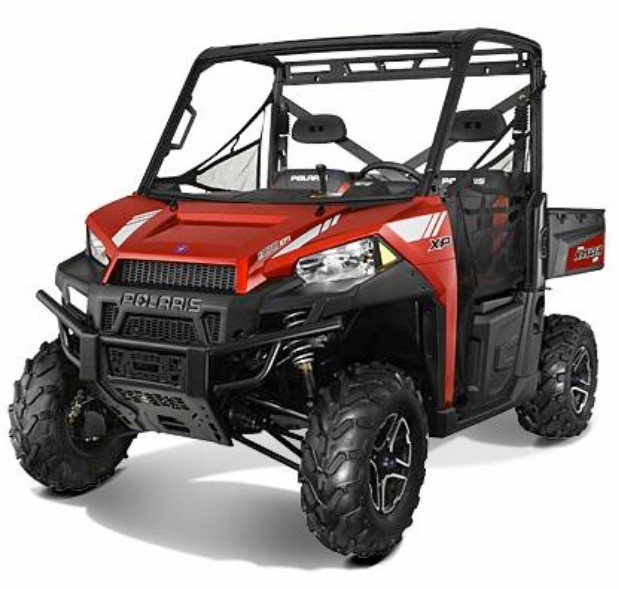He looks a little like Robby-the-Robot, the fictional robot of the 1956 science fiction film The Forbidden Planet. Both Robby, seen below in the picture to the left, and Atlas, on the right, are bipedal. But Atlas has much longer arms that look more like the appendages of the cyber-creatures, The Borg featured in Star Trek.
Atlas is a product of Boston Dynamics of Waltham, Massachusetts. Boston is working with DARPA, the research arm of the U.S. Department of Defense, to develop a wide range of robots including the SandFlea and BigDog. But these two bear no resemblance to a humanoid. Atlas does.
Currently you can watch a video of Atlas as the robot operates at the end of a tether. But plans are afoot to make it tether free. Standing 1.8 meters (6 feet) tall, and weighing 150 kilograms (330 pounds), Atlas is designed to go where it would be dangerous for humans to go while operating with a level of sophistication and autonomy. For example Atlas could defuse a runaway nuclear reactor before a meltdown happens, rescue people from an environmental disaster or battlefield, or even tend to the sick and elderly.
Atlas is designed to climb using both hands and feet. It features actuators and servomotors that give it flexibility and range of motion not seen in previous humanoid robots. The robot can adjust to impacts to keep its balance. Its head incorporates Carnegie Robotics’ MultiSense-SL, a vision system that sees objects in three dimensions and incorporates LIDAR to map its immediate surroundings.
DARPA unveiled Atlas last week with the robot performing calisthenics to demonstrate its flexibility. It will be one of several robots in the DARPA Robotics Challenge, a contest running this year to test a number of robots to see if they can be used for disaster response.
The robots entering the contest will be asked to perform eight tasks to see if they can work in rough terrain and operate human machines and tools. This includes climbing and walking over complex terrain, entering, driving a utility vehicle (seen in the picture below) through an obstacle course and then exiting from it, removing a pile of debris blocking an entryway, opening and entering a building through a door, climbing stairs and ladders, breaking through a wall using power tools like drills and sas, locating and closing open valves, and carrying, unspooling and connecting a fire hose.
The Challenge features robots from many sources including entries from the United States, the United Kingdom, Japan, Mexico, Spain, Israel and Brazil. Universities such as Carnegie Mellon, Drexel, MIT, and Virginia Tech have brought their humanoid robots to the contest as has two divisions of NASA, the Jet Propulsion Laboratory, and the Johnson Space Center. There are even entries from private companies such as Boston Dynamics. These include robots from Raytheon, Schaft Inc., and Boston Dynamics.
Over the coming months as the teams respond to the eight challenges they will develop sophisticated software to tackle each mission. We’ll let you know who are the winners.



















In a few more years, latter generation “Atlas” robots will be able to operate nuclear power plants, mine uranium, enrich uranium, handle nuclear waste, etc. That should make nuclear power production both safer and cheaper. It should also release an unstoppable avalanche of ever increasing chronic unemployment. We are probably no more than a decade away from nuclear energy 95% produced by robots. The chronic unemployment problem will only yield to AI/hominid mind meld. Resistance is futile. You will be assimilated. Get ready to embrace the Borg.
I recognize that robots like Atlas will take on jobs that are hazardous to human health. I don’t know how many humans will find themselves without employment as a result but certainly these types of jobs represent a very small percentage of total employment. But I sense that you are trying to make a point about our continuous push to develop robotics and artificial intelligence. If Kurzweil is right this is inevitable. Do you think we will become a “collective?”
(( Do you think we will become a “collective?”))
That depends on how AI evolves. But the short simple answer seems clearly yes. Nearly every hominid will be to some extent mind-melded with some sort of electronic AI sentience. From that point on, the organic and social evolution of mankind will be under the control of AI purposes and designs. I do not expect that mind meld transformation to happen before human overpopulation triggers an avalanche polar methane release. That’s probably 40-50 years out. I’m guessing among the first major objectives of truly sentient electronic AI would be drastic reduction of hominid population environmental footprint. That wouldn’t necessarily be unkind.
With universal AI sentience, material productivity would hugely increase; so all hominids could in effect be “rich.” If hominids can be packed into private mind-meld high-resolution holodecks that consume say 10 kWh per day, they might not want to venture out much into the actual world. Maybe only one out of a hundred would own a private car. If a personal holodeck chamber brings the universe to the person, why would the person need to go to the universe? As mentioned previously, robotic nuclear power could drive the holodeck system for 10-billion or so hominids. A 5-story residential footprint for all humankind could fit in the state of Ohio. The whole trick of the Borg collective is a technology that converts hominids into organic robots under AI control. Maybe something like that is what China envisions for the future, and that’s why it’s moving 250-million peasants into high-rise cubicles located in industrial centers. While that sounds like highly congested urban centers, if the peasants spend most of their time either at work or in their cubicles, congestion might even be lessened.